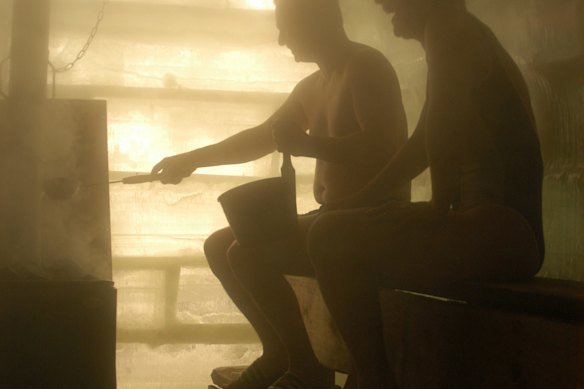“In Finland, pretty much every house has a sauna. Germany, Sweden, Norway – it’s been a common practice for a long time. And Japan has a huge number of public saunas,” said Tossavainen, who was born in Finland and has never lived in a house without a sauna.
“I think because of the wellness side of it, it’s really blossomed quickly.”
Saunas are very much a way of life in Finland.
Dr Aaron Petersen, associate professor of exercise physiology at Victoria University, said there was growing evidence that people benefited from regular heat and cold exposure through saunas, spas and ice baths.
“The health benefits, whether you choose hot or whether you choose cooling, can often be very similar,” he said. These include improvements to cardiovascular health, physical function such as strength, fitness, blood-sugar regulation and mental health.
But there are two caveats. Home equipment probably has inferior temperature control to those in labs. And people need to use saunas, spas or ice baths several times a week, if not daily, to reap the benefits.
The number of home saunas, spas and ice baths in Victoria is tricky to collate. But data from the Victorian Building Authority shows there have been 1297 building permits for pools, spas and plunge pools so far this year, predominantly in the wealthier areas of Bayside, Boroondara, Greater Geelong and the Mornington Peninsula.
Tossavainen said rising insurance, labour, material and WorkCover costs had pushed prices for his company’s saunas beyond the capacity of many households. “Our average sale five or six years ago [for private homes] might have been $11,000 to $15,000. Now it’s $24,000 to $30,000.”
He said there were growing numbers of companies selling Chinese flat-pack products, boosting supply at the cheaper end.
There’s also been huge growth in sauna numbers in apartment buildings and wellness centres. “Ten years ago, I could count on one hand the number of jobs we had done that were priced over $50,000. I’ve probably done six already this year over 50 grand.”
Victoria University’s Petersen said people should build up tolerance to heat or cold exposure.
Loading
“Heat exposure and cold exposures are stressful on the body,” he said. “If we start doing exercise, we wouldn’t run a marathon straight away. I’d recommend to anyone who does it, particularly if you’ve got a health concern or are older, that gradual exposure would be the best way to go. And it probably wouldn’t be a bad idea to get a medical check-up beforehand.”
So, is a private sauna, steam room or ice bath a worthy investment for non-athletes?
“That’s a tough question,” said Peterson. “There is definitely potential for health benefits and I know that they are getting cheaper.”
But people with a bath and a thermometer can enjoy similar benefits for a fraction of the price. “Forty to 42 degrees Celsius, and then we typically have people immersing themselves up to the waist or up to the chest for about 30 minutes,” he said.
McGrath said the popularity of ice baths had been fuelled by Instagram. “Those things are fads. They come. It’s not necessarily going to last as a sauna or a spa or pool [might].”
Tossavainen said he had bitten the bullet and ordered a small sample of ice baths from China. That market is competitive, with a starting price of $4000 to $5000.
The Business Briefing newsletter delivers major stories, exclusive coverage and expert opinion. Sign up to get it every weekday morning.
Read the full article here
